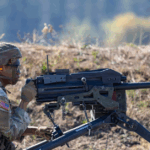
The Army’s top acquisition official on Tuesday detailed potential options that could help speed up deliveries of new Abrams tanks to Poland, following the country’s recent agreement to procure 250 M1A2 Abrams. During a House Armed Services Tactical Air and Land Forces Subcommittee hearing, Rep. Mike Turner (R-Ohio) asked Army acquisition executive Doug Bush about the potential for ramping up production capacity at the Lima Army Tank Plant in Ohio to move up the delivery timeline. “Over the last 10…

 By
By 











